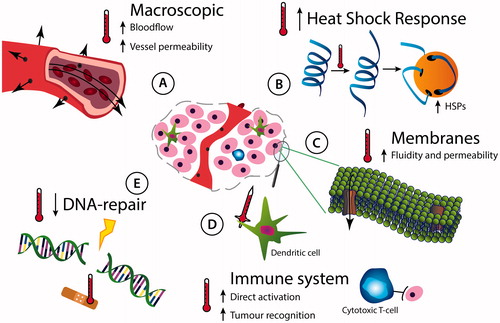Figures & data
Figure 1. Biological effects of local hyperthermia in the tumour. A tumour, represented by the pictogram in the centre, and the diverse physiological and molecular effects of heat are indicated. (A) Hyperthermia alters physiology of the centrally located tumour by affecting its vasculature: heat increases the blood flow and vessel permeability. (B) Heat causes proteins to unfold and increases the intracellular amount of protein-chaperoning heat-shock proteins. (C) Temperatures exceeding 37 °C result in increased cell membrane fluidity, thereby influencing their permeability. Specific biological effects of heat on membranes may be further affected by altering properties of membrane-bound-proteins. (D) Local heat helps to activate the immune system and causes it to attack the tumour directly, but might also cause a systemic effect by which immune cells attack tumour cells distant from the heated tumour. (E) Hyperthermia affects DNA damage repair pathways by deactivating specific repair proteins.

